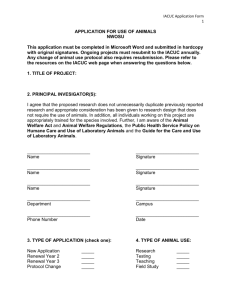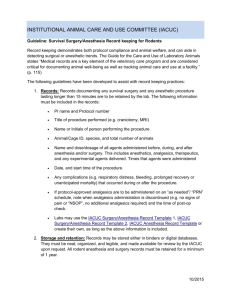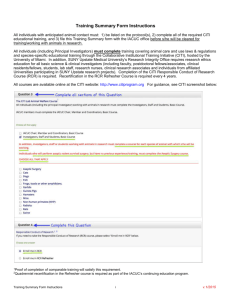Screenshots and Instructions for CITI`s Animal Care Training
advertisement
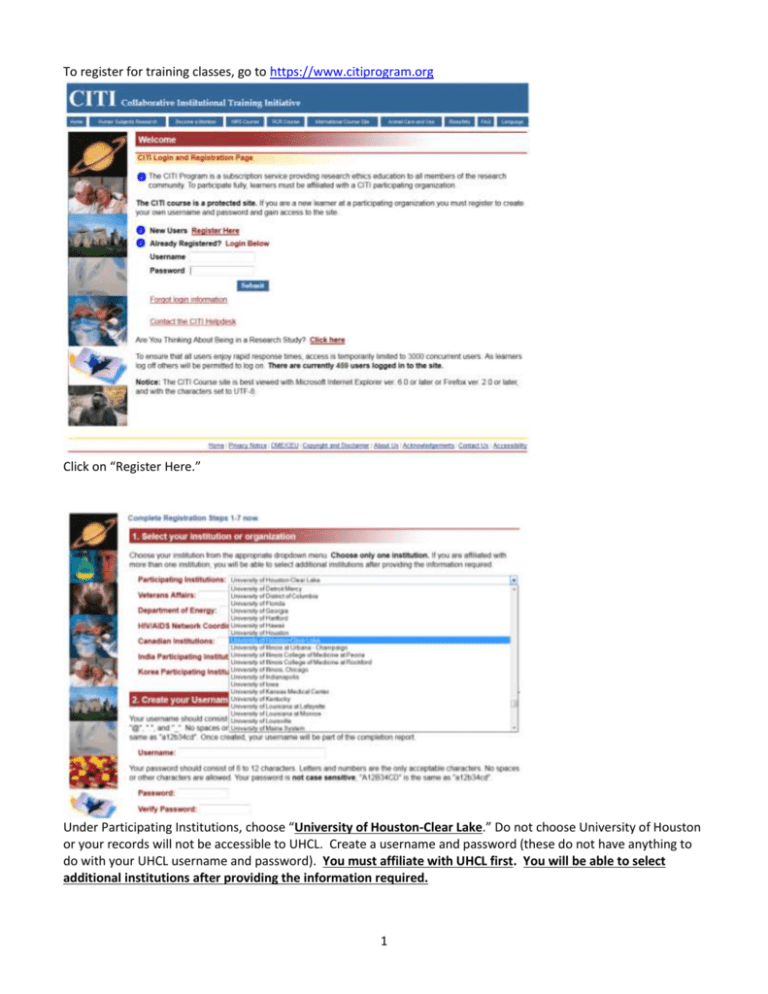
To register for training classes, go to https://www.citiprogram.org Click on “Register Here.” Under Participating Institutions, choose “University of Houston-Clear Lake.” Do not choose University of Houston or your records will not be accessible to UHCL. Create a username and password (these do not have anything to do with your UHCL username and password). You must affiliate with UHCL first. You will be able to select additional institutions after providing the information required. 1 Choose a security question and answer. Enter your name as you are known at UHCL. Enter your choice of email address. Number 6 – DO NOT choose CME/CEU credits unless you know that you need them for your professional certification. Students will unlikely ever need this option. It does not cost individuals who are affiliated with UHCL to take the CITI Laboratory Animal Welfare training. Number 7 – Most will choose “No, I am not interested at any price.” Please note that UHCL is not responsible for the cost of study guides. Number 8 – It is your choice. 2 Fill in fields that have an asterisk. Faculty and professional staff should choose “Principal Investigator” or “IACUC Member” depending on role. Students should choose “Student Researcher” and either “Graduate Level” or “Undergraduate.” Non-researchers should choose a title that best describes their role (IACUC Member, Research Administrator, etc.). Other fields are optional. 3 For animal researchers, on Question 1, choose “SBR Refresher Course, No direct contact with human subjects.” On Question 2, leave it blank. On Question 3, choose “Not at this time, thank you.” For Question 4, if you are going to use live animals, choose “Working with the IACUC Course.” If you are also on the IACUC, you need to choose the “Essentials for IACUC Members.” For those that plan to work with rats, also choose “I work with Rats.” If you plan to do surgery with rodents, choose “Minimizing Pain and Distress” and “Aseptic Surgery.” Examples: If you are a non-scientist member of the IACUC, you would choose: Essentials for IACUC Members If you are a student in the Learning Principles course, you would choose: Working with the IACUC course I work with Rats 4 If you are a student researcher working with fish, you would choose: Working with the IACUC course If you are a student researcher working with rats, you would choose: Working with the IACUC course I work with Rats Minimizing Pain and Distress and Aseptic Surgery (if needed) If you are a faculty member researcher that uses rats and is a member of the IACUC, you would choose: Working with the IACUC Essentials for IACUC Members I work with Rats Minimizing Pain and Distress and Aseptic Surgery (if needed) You will see a list of courses that you are required to take. You do not need to take the CITI training courses related to Human research if you are only working with animals. To start a course, click “Enter.” First, click on “The Integrity Assurance Statement” and agree to the first statement: “I attest that I have read and understand the above statement. I attest that I am the person listed at the top of this page and I assure that I will complete the required ethics course work with the highest degree of integrity and professionalism.” 5 You will then be able to click on the course module. Click the title and then read the module’s content. Some modules will have a quiz at the end. Click on “Take the quiz.” 6 Some questions require you to choose the one best answer while others require you to pick all correct answers (hint: for questions that ask you to choose multiple answers, think of each option as a True/False question). You may re-take a quiz if you did not score well, though quizzes will not always be the same. At the end of each quiz, you can choose to go to the next module or see the grade book. The course will let you know as you pass each module. You can come back at a later time to finish a module. Continuing Education Training Click on “Add a course or update your learner groups.” 7 Check “Working With Animals in Biomedical Research – Refresher Course” and a new module will be added. Why do I need to do all of this? From the Guide for the Care and Use of Laboratory Animals, 8th edition (selected passages, pages 15-17, emphasis added) Training and Education All personnel involved with the care and use of animals must be adequately educated, trained, and/or qualified in basic principles of laboratory animal science to help ensure high-quality science and animal wellbeing. The number and qualifications of personnel required to conduct and support a Program depend on several factors, including the type and size of the institution, the administrative structure for providing adequate animal care, the characteristics of the physical plant, the number and species of animals maintained, and the nature of the research, testing, teaching, and production activities. Institutions are responsible for providing appropriate resources to support personnel training (Anderson 2007), and the IACUC is responsible for providing oversight and for evaluating the effectiveness of the training program (Foshay and Tinkey 2007). All Program personnel training should be documented. The Research Team The institution should provide appropriate education and training to members of research teams—including principal investigators, study directors, research technicians, postdoctoral fellows, students, and visiting scientists—to ensure that they have the necessary knowledge and expertise for the specific animal procedures proposed and the species used (Conarello and Shepard 2007). Training should be tailored to the particular needs of research groups; however, all research groups should receive training in animal care and use legislation, IACUC function, ethics of animal use and the concepts of the Three Rs, methods for reporting concerns about animal use, occupational health and safety issues pertaining to animal use, animal handling, aseptic surgical technique, anesthesia and analgesia, euthanasia, and other subjects, as required by statute. Continuing education programs should be offered to reinforce training and provide updates that reflect changes in technology, legislation, and other relevant areas. Frequency of training opportunities should ensure that all animal users have adequate training before beginning animal work. The Collaborative Institutional Training Initiative (CITI) is a training platform used by more than 1130 institutions around the world. CITI has become the most prominent source for animal use training. Additionally, it provides the database support that allows UHCL to document training activity of animal users. Besides complying with federal law and accreditation standards, training in proper animal use and ethics helps to ensure the welfare of animals used by us and reassures the public of our commitment to the ethical use of research animals. 8
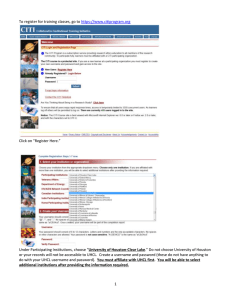



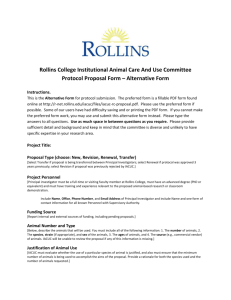
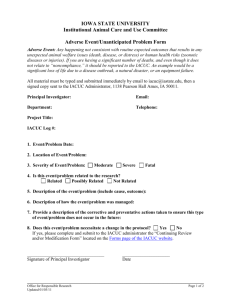
![Annual Renewal Form [Word doc]](http://s3.studylib.net/store/data/006747085_1-a9e44ad7ea0dbb852a0e727dcb34abcc-300x300.png)
